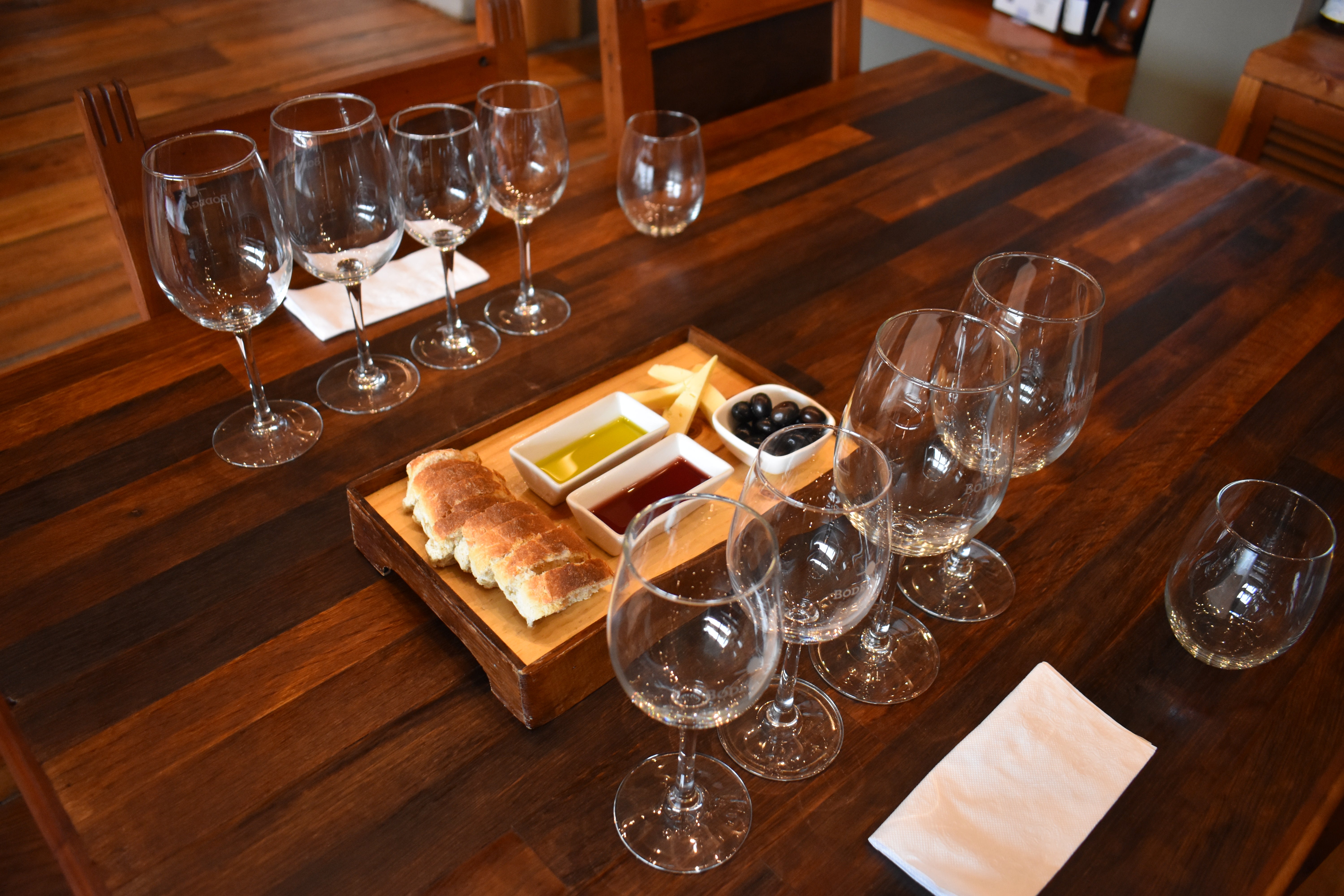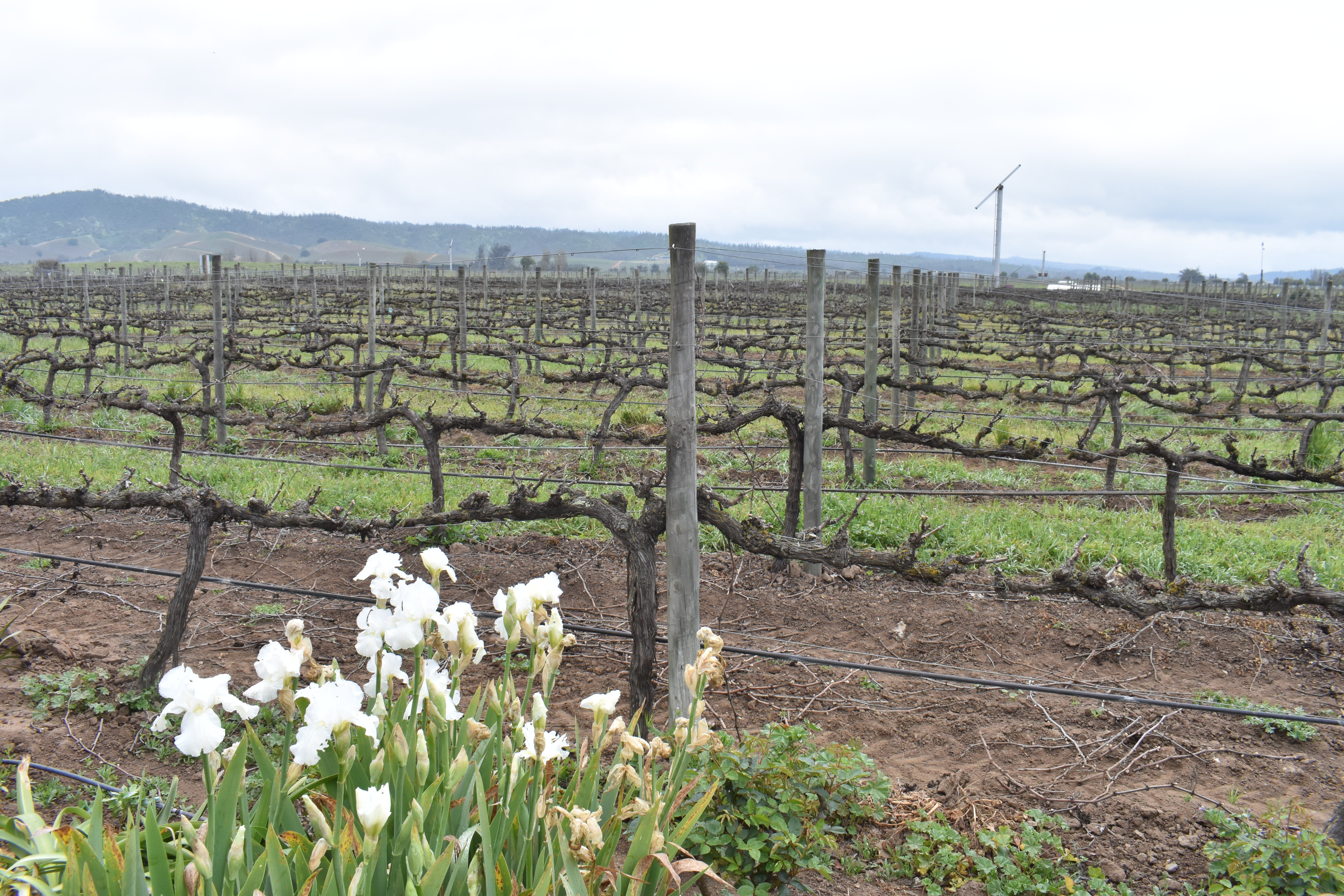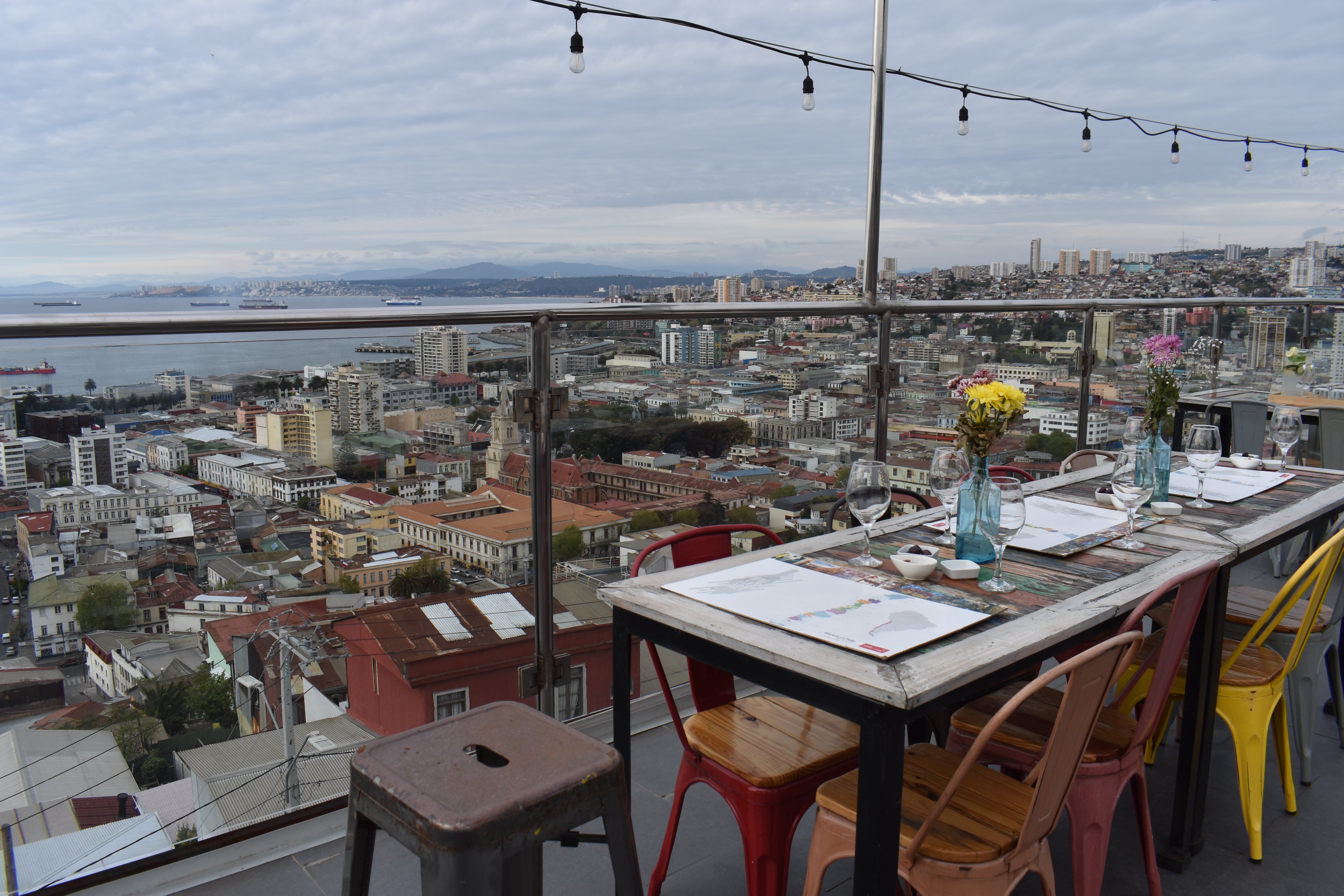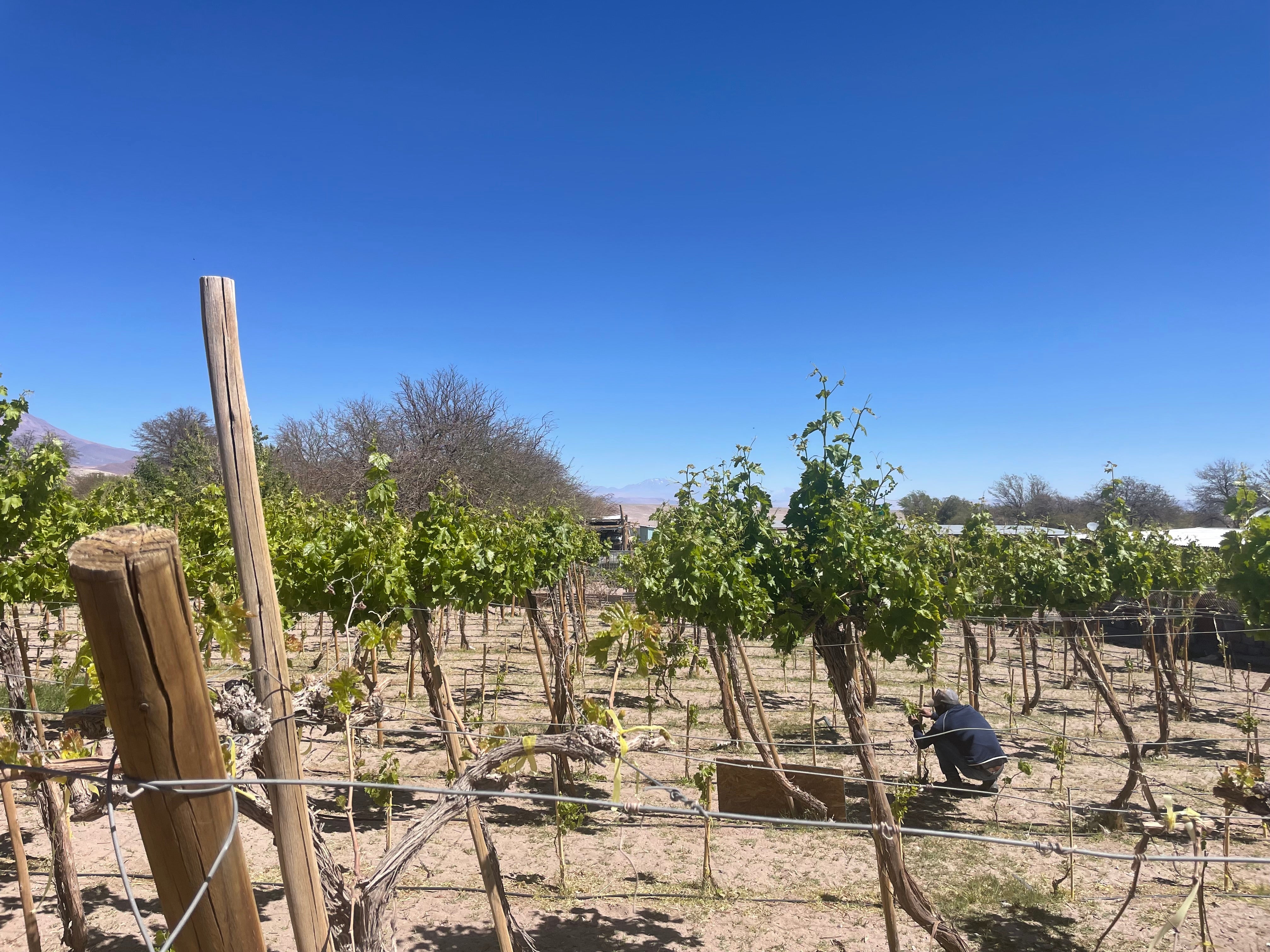The Independent's journalism is supported by our readers. When you purchase through links on our site, we may earn commission.
How to do a sustainable wine tour of Chile
From megadrought to malbec: Frankie Adkins charts the dream trip for oenophiles that’s still responsible

Chile – South America’s long, western sliver – is a country of microclimates, stretching for 2,700 miles; or roughly the distance from Denmark to Morocco.
Diverse as Chile’s landscapes are, from the salt-baked planes of the Atacama desert to the metropolitan sprawl of Santiago and the snowcapped peaks of Patagonia, they are united by one problem: a major water crisis. Chile’s “megadrought” is forcing the country to rethink its resources and, for the $6bn wine industry, the climate crisis is giving rise to ingenuity. More than 80 per cent of Chile’s bottled wine now falls under the Sustainable Wines of Chile code, which calls for strict parameters around waste, recycling, energy and, crucially, responsible water use.
Travellers following Chile’s well-trodden wine circuit tend to gravitate to the capital, Santiago, but those who venture further afield can sample the bolder flavours of climate-resilient wine.
Casablanca
Bodegas RE Wine

Leave the smog of the Santiago basin behind for the vineyards of Casablanca, Chile’s answer to Napa Valley. An hour’s drive north of the capital, the journey is enhanced by minty wafts of eucalyptus and marigold clusters of Californian poppies
“When winemaking you’re pretty much at the mercy of Mother Nature,” a guide at the homely, family-run Bodega RE vineyard says, remembering a river that once ran past the grounds. As the prefix “re” might suggest, Bodega RE revisits ancient winemaking traditions with a modern spin. A proportion of their wine is fermented in amphorae – vast 250-year-old clay pots – removing any oaky notes a barrel may leave. The end products are unusual wine blends, like pinotel (pinot noir and muscatel) or chardinoir (chardonnay and pinot noir).
Wine tastings take place in a rustic bodega, complemented by creamy slabs of queso, strawberry balsamic vinegar and olive oil, grown and pressed in-house.
Where to stay: Hotel and Spa Casablanca, Casablanca.
Tastings: Book via the website; bodegasre.cl
Casas Del Bosque

Hop across the Casablanca Valley to Casas Del Bosque, a boutique 250-acre vineyard specialising in cool-climate wines. Still considered relatively small scale, this winery produces around 120 million bottles per year, with a focus on chardonnay, sauvignon blanc and riesling.
The Italian Solari family has witnessed considerable climatic changes to the Valley since founding Casas Del Bosque in 1993. Conserving water is now a top priority, with the grass dug up so as not to guzzle from the vines, and deep underground wells irrigating the land.
Mini-wind generators dot the vineyard, protecting the vines from the clutches of winter frost. Tastings are hosted by an aroma expert in a gleaming glass-walled room above the cellar, although Casas del Bosque’s winemaking experiences and vineyard bike tours make for a more energetic experience.
After sampling crisp sauvignons and heady siryahs, visitors can pick a bottle of their favourite over lunch at the winery’s upscale Restaurant Tanino.
Where to stay: Le Reve Hotel, Santiago.
Tastings: Book independently or with a tour guide and transport through Viator and Chile Dream Tours.
Valparaiso
Winebox Hotel and Urban Winery

Board a bus from Santiago to the port city of Valparaiso, a jumble of helter-skelter hills, rainbow funiculars and street-art plastered walls.
To some grungy, others bohemian, “Valpo” has long been a haven for poets, artists, students and now a tranche of hipster restaurateurs and winemakers. Jutting out on a hill in the historic quarter is the colourful Winebox Hotel, stacked from 25 decommissioned shipping containers, each room proudly named after a variety of grape.
Winebox’s Kiwi owner, Grant Phelps, was inspired by sustainable architecture after the devastation of the 2011 Christchurch earthquake, hatching the plan for South America’s first shipping container hotel, forged from 75 per cent recycled materials. Phelps regularly hosts sundowner wine tastings on the hotel’s roof terrace, high above the twinkling lights of Valparaiso. Guests are asked to “drink outside the box”, expanding their palettes with a broad collection of big and small labels, including his own carbon-negative blends, El Libertino and El Decadente.
Where to stay: Winebox Hotel, Valparaiso.
Tastings: Book directly through the hotel reception.
Atacama
Vina Ayllu

Take a short flight or a rambling bus journey to Chile’s Atacama desert, which is worth it for the window-gazing opportunities alone, where mounds of sand morph into scraggly shrubs and towering valleys of cacti. On the outskirts of Toconao, a village oasis near the tourist town of San Pedro de Atacama, lies the world’s second-highest altitude vineyard, some 2,350m above sea level.
At Viña Santa Romina, extreme heat and volcanic soils create unusual growing conditions, driving the harvest forward three months to December. The vineyard is part of a cooperative of Lickan Antay producers: a group of indigenous peoples who have cultivated wine for sacred purposes since the 16th century.
Reviving ancient wisdom, the rhythms of the sun and moon still guide the viticultural practices used today. The end product, a wine label named Ayllu, which translates as “community”, reflects the artistry of producing wine in such barren growing conditions.
Tours come in two options: a guided visit to the village’s wine cellar or an option to explore the vineyard. Both involve sampling three wines, although the extreme heat fosters bolder flavours, which may not be to everyone’s taste.
Where to stay: Terrantai Lodge, San Pedro de Atacama.
Tastings: Book a tour directly, at least 24 hours in advance.
Join our commenting forum
Join thought-provoking conversations, follow other Independent readers and see their replies
Comments
Bookmark popover
Removed from bookmarks